I was reading Rupert Brooke’s Letters from America, which he wrote about his 1913 journey, but which wasn’t published until 1916 with a foreword by Henry James – apparently his last piece of writing. Brooke had died in 1915 in Greece, and is known for his romantic view of dying for one’s country.

The book is a set of well-written notes about Brooke’s 1913 travels which, despite the title, included a visit to Samoa, then under the German flag. Brooke is very sympathetic to the German rule saying it was better than that of British rule in Fiji. Nevertheless, a Samoan princess did not agree with this assessment. Climbing the flagpole she removed the German flag and, having torn it into pieces, danced on the remnants. Brooke does not report any retribution.
He describes Samoa as Heaven and although it was ruled for a time by a tripartite administration of Germany, United Kingdom and USA, in 1900 the western islands were ceded to Germany while the Americans kept the islands east of the 171st degree meridian. This latter information was not gleaned from Brooke’s writing, but his book did draw my attention to the fact that New Zealand invaded Samoa at the outbreak of war, rounding up the 50 or so Germans and native auxiliaries. New Zealand did not let go of its conquest until 1962. The League of Nations bequeathed it as a territory and other post-war finagling ensured the long time to independence.
Rupert Brooke’s account was certainly not first hand of the invasion but it is a wonder nobody has made a film of the story – with Sam Neil at the head of the expeditionary force wandering the Pacific before mounting the invasion. The Germans had a couple of large ships in the area but they were told by Berlin not to attack. A film would suit Neil’s wry humour.
Anyway Brooke wrote the following: “They must have landed at noon, I see. How hot they got. I know that Apia noon! Didn’t they rush to The Tivoli bar – but I forget, New Zealanders are teetotallers. So, perhaps, the Samoans gave them the coolest of all drinks, kava; and they scored. At what dances in their honour, that night! – but, again, I’m afraid the houla-houla would shock a New Zealander. I suppose they left a garrison, and went away. I can very vividly see them steaming out in the evening; and the crowd onshore would be singing them that sweetest and best-known of South Sea songs, which begins ‘Goodbye, my Flenni’ (Friend, you’d pronounce it), and goes on in Samoan, a very beautiful tongue. I hope they rule Samoa well.”
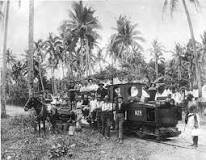
Overlooking this invasion was Tusitala, the great bard of the South Seas, also known as Robert Louis Stevenson, who now lies atop Mount Vaea in Apia. I still shake my head at the thought of the Kiwis invading Samoa.
This is a Knife
That is the famous line uttered by Crocodile Dundee when threatened not by a white, but a big black man – dinkum white Aussie threatened by a stereotype. We whitefellas felt comfortable; great sight joke and the sub-title – a smart Aussie will always outwit the dopey Yank.

Last week newly-minted young white constable faces a taller black teenager in Sydney, who is alleged to have said that he will break the constable’s jaw, “bro”. The young man in the hoodie knows his street talk! The young constable, instead of inviting the young alleged thug to have a cup of coffee to discus the immense psychological pressure the young man was experiencing, moves across, turns him around and trips him – one might think that reasonable if someone says he is going to break your jaw.
He did not: (a) draw a baton, (b) use tear gas, pepper or mace, (c) use a taser or stun grenade, or (d) shoot him.
That is the problem I have with police forces. They are clothed in ominous dark uniforms and dehumanising headgear with all the armaments of the military. Yet the police force is not meant to be a killing force. The more the toys of destruction are supplied to an increasingly poorly-adjusted police force, then working as an agent for Trumpian cancer metastasising across America, then who is going to halt their spread?
The solution to violence is not providing more weapons – the reverse should be true. A police force should be more concerned with each police officer being given the confidence to settle disputes with the minimum of violence. For instance, at this time of pandemic widespread use of agents designed to compromise the cardio-respiratory system such as the irritant sprays should be banned. The problem is that politicians wring their hands over domestic violence, send mixed messages when violence is rife in the community. Politicians yield to the slightest demand of police associations, where the megaphone is the loudest.
There is ambivalence when police are involved.
At the outset of the piece, I related the instance of a young policeman threatened with violence. He tackled the young aggressor, one on one – it was not a gang tackle. He was responding as he was trained to do in a potentially violent situation.
Contrast it with the images of multiple law enforcement officials, be they men or women, tackling the one individual. The sight sickens me. I am sure that there is almost always provocation and prisons, for example, are dehumanising violent environments. Drugs are dehumanising.
However, the wolf pack response is descent to the same primitive level. Just look at the all-white police officers at Central station last Saturday let off the leash, the officer in braid visible behind – not trying to restrain his men with their eyes full of hate. Not trying to lead! Not trying to maintain his police force in social distancing. Except for himself, the senior officer “looking good in a uniform”, as they say, is pictured generously social distancing himself from the fray – leading from behind.
Yet one episode after another of alleged police brutality tumbles through the media. I can never forget the images of Ron Levi, an unfortunate man having a psychotic episode in the surf at Bondi who was shot four times by two drug dealers who at the time happened to be members of the NSW police force. Shooting someone, even one carrying a knife, when presumably every policemen is taught how to disarm with the minimum of violence, destroys community confidence, shakes one’s confidence. No charges were laid against these men, despite this young guy being murdered in full sight.
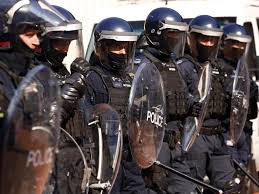
Instead of questioning whether police are competent to have the paraphernalia of aptly named “assault weapons”, why doesn’t the debate start about when the distribution of weaponry should be curtailed?
Death in custody is like domestic violence; it has circled in earnest discussion ever since I can remember. The number of Aboriginals in custody has not reduced. Violence has been endemic in Aboriginal communities; to say it is not is to deny reality, irrespective of whether it is fuelled by alcohol or other drugs.
Yet there is an increasingly articulate group of Aboriginals – lawyers, public servants, Parliamentarians. The grievance rightly exists; obviously the solutions are not there for change despite the increasing number of these Aboriginal advocates. How many years are needed for you articulate people to effect change, not just to leave it someone else; not just to complain – blaming government is a way of doing nothing.
One of the advantages of modern society is that everything is recorded; just as that young constable’s action was. Instead of saying that he had had a bad day, the police commissioner should tell us what he would have done; probably nothing different. A bruised ego for an aggressive youth; but what does the young constable learn? Just exhorted not “to have a bad day” again?
Meanwhile the weaponry lobby rolls along, getting its inspiration from the brutal obscenity that masquerades as policing in the United States. Democracy dies when the police force, shorn of accountability, becomes the means of its destruction not its defence. The more weaponry a police force has the more it is likely that you or I will become the next Ronny Levi.
As they said when they came back from Bondi after killing Levi,
“That was a knife!” And the man with the braided cap responded: “We have just the carpet under which you can put the knife, and we won’t tell anybody. Probably need to replace the carpet – we burn them after five years. They become too stained.”
The Third Pole
I had not thought of the Tibetan Plateau as the Third Pole. Joel Berger’s book “Extreme Conservation” with its subtitle about “Life at the edges of the World”, in which he describes his extraordinary life, draws attention to the Third Pole. By and large, his experiences are in the snowbound parts of the planet in the depths of winter.
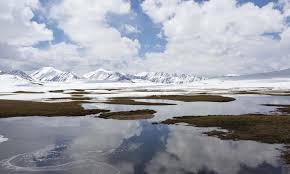
The author has spent a considerable part of his working life trying to assess the state of endangered species, including the musk ox. The musk ox is an extraordinary animal able to survive the harshest of winters; it was hunted to extinction in Alaska, but revitalised by the re-introduction of animals there from Greenland.
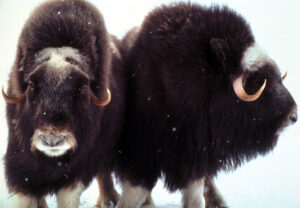
There is a musk ox farm just north of Anchorage in a place called Palmer, on the way to Mount Denali. Incredible was my response when I first saw a live musk ox – sturdy and solid with a skirt of hair reaching its feet and with horns Berger describes as “piercing armaments”. Their closest relative is the wild yak that lives high in the Tibetan plateau, itself a different beast from the domesticated yak – and considerably bigger than the musk ox.
The musk ox is beautifully adapted having spiralling nasal turbinates so that freezing air has been warmed sufficiently by the time it reaches the lungs so they don’t become snap frozen. I have adopted two of the calves, which has maintained my status as a herd associate and bought a scarf made from the combed wool. It is woven into an extraordinary light fabric, called qiviut, which is remarkably warm and as long as you like a brown scarf, everyone should travel with one in a cold climate.
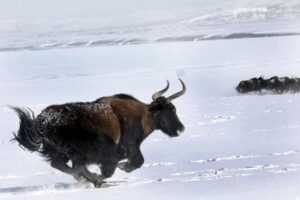
However, this interest in the musk ox is a prologue to the matter of the Tibetan plateau where the wild yak roams, admittedly in decreasing numbers. The problem is in the assessment of numbers, it is important to tag a beast – and wild yaks are very difficult to tag. This is the Berger expertise – tagging and tracking – and being heroically mad and brave.
However, that was the task facing the author where wild yaks are seen nearing 6,000 metres above the plateau. The Tibetan Plateau occupies an area of around 1,000 by 2,500 kilometres, at an average elevation of over 4,500 metres.
As Berger says, this plateau is the “water tower” of Asia. All the major rivers of south-east Asia – the Indus, the Mekong, the Brahmaputra, the Kangali, a major tributary of the Ganges, as well as the Yellow and Yangtze rivers all rise on the Tibetan plateau. Even Burma’s major Irrawaddy River is not immune from the effect of the Tibetan plateau.
Berger describes camping in the shadow of the Bukubada glacier, “a massive vault covering 170 square miles” (44,000 hectares) is vital to be preserved, monitoe. He describes other glaciers – the Yuxu and Yuzhu with the giant Muztag Ata glacier, located on the far western margin of China and east of the Pamirs Plateau, at a summit elevation of 7,546 m. So much water locked up and yet climate change has reached the plateau. Berger observes in the ice, the vegetation, the movements to higher ground of the indigenous wildlife, so many of which through indiscriminate slaughter are going the way of the bison on the North American prairie.
Belatedly the Chinese have recognised this, but as with so many authoritarian regimes they believe they can beat Nature into submission. Because we humans all live close to sea level, few give much thought to the dams being built on the Tibetan plateau. Thus this plateau, which provides Asia with much of its river water, is too precious to be left to one country with its selective concern about the World Order.
With climate warming and the glacial water storage thinning on the Plateau, water becomes scarce and this process will not be accelerated by the Chinese – given their form, who is not to say that they will divert most, if not all, of the water into their own river system. The planet despoilers are hard at it, and without any real checks and balances. The Mekong is particularly at risk, as Cambodia found out in the last dry season.
The world knows the Amazon is at risk – but so is the Tibetan Plateau. The problem with Tibet is clear.
However, in the minds of the West, Tibet is the Dalai Lama, once a hero but now increasingly shunned, soon to be a footnote in history. The successor will be appointed by a supervised Chinese process; Tibetans lose the links to their last traditional living god chosen by traditional mumbo jumbo.
What has to be avoided is to miss the importance of Tibet. Joel Berger gives us an intimate glimpse of what we will miss once the short term imperative of`progress ends up with the Tibetan Plateau a ruined wasteland deprived of wild life and water.
It’s somewhat ironic that the Chinese President, Xi Jinping, is reported to have cited the following Chinese proverb in a recent speech: “The ceaseless inflow of rivers makes the oceans deep.”
The problem is there is red ink seeping across the map of the world and it is not British.
If the world were brave enough it would face down China over the Tibetan Plateau – it should have the same status as Antarctica. Look, my grandchildren’s generation (and onwards). Witness the World at War over water, and remember your parents and grandparents should have read what Berger has written, taken heed, stopped wringing their hands over the Tibetan Plateau and acted. But don’t worry – there is not any moisture left on your hands. It all left with your ancestors.
Christ stopped on his way to Wilmington Station
Biden is a dud. His advocacy of the appointment of one, if not the biggest, dud on the Supreme Court, Clarence Thomas, shows that one dud knows another. At the Senate confirmation hearings in 1991, it was Biden who pilloried Anita Hall. She had accused Thomas of sexual harassment. Biden denied her the chance to present corroborative evidence. Then he came crawling back after 28 years after the Brett Kavanaugh disgrace, trying to apologise to Professor Hall – he received no dice.
This senator from Delaware, with his own problems in this area, has so many strikes against his name – and his gaffes are continuing although he has barely been out of his home for the past three months. Whether this means these gaffes are the first signs of mental decline, only his closest medical advisers know. If there is any indication of cognitive decline, he should just immediately withdraw, full stop.
I have mentioned that he looks old, covered up by a sunbeam smile, but even if he goes forward, he must resist a Sandra Palin, whether male or female, of the left. Palin helped do John McCain in. McCain was seemingly more astute than Biden and only a “chicken” – 71 at the time. If the Democrats nominate this aged “rooster”, they have to make sure that perception of his inherent weakness is not further compromised by a Vice-Presidential nominee who is already campaigning for the White House succession. It is not hard to do the numbers on Biden’s age.
So the Democrats nominate a younger active assertive person with the “smarts”, who only serves to accentuate Biden’s weakness. On the other side Trump needs a tough image now that people are beginning to laugh at him – now, after the stories of him huddling in the White House bunker and then walking behind his Praetorian Guard as they gassed the innocents. Sound familiar?
Trump recognises this need for “toughness” and in this context having a pliant poodle as a Vice-President gives him that air – at least to his fan base.
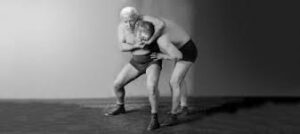
Trump is also well versed in the theatre of professional wrestling, where there is the Bad Guy against the Good Guy. Just simplify the rhetoric and make Biden look weak and confused. Violence. Pile into him; mock his weakness; back-slam him; put him in a headlock – a crusher hold perhaps. Let’s turn Presidential debates into “Ringside with the Wrestlers”.
Trump has little else left. He is the Bad Guy with the devoted fan base. The Biden insipidity gives him a chance.
Thus Biden may be caught between two “shouty” forces, which continually emphasise his inherent weakness.
Is the electorate going to be won over in November? Think carefully, you Democrats, don’t become real donkeys.
Mouse Reflection
I decided the pool was deep enough to reflect a mouse whispering.
In the Feb 28 blog, my mausmeister under the heading: “The Price of Never Being Wrong”, wrote the following, which has been reproduced abridged…
The problem with epidemics is they thrive on ignorant national leaders, who have no idea of public health, suppressing inconvenient information. This increasing government secrecy is coupled with the modern version of the courtier castrati, people without ideas but with perfumed phrases whispering into the ear of national leaders who have lost the ability to apologise.
… I once wrote a small monograph entitled “The Dilemma of the Public Health Physician” in which I attempted, as I said, “to help public health physicians to work through the situation which confronts many professionals when they are in possession of information which others perceive as ‘sensitive’ or valuable in any respect.”
… I went on to argue that all public health information should be freely available. Even over 20 years ago I wrote; “there is an increasing tendency for the political walls to be daubed with the graffiti of misinformation”.
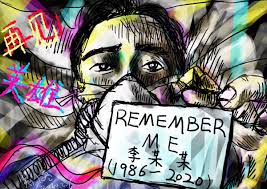
On reflection am I just succumbing to daubing those political walls? Well, that is the point – public health expertise is being allowed not only to languish but also ignored as an inconvenience. But as many politicians have found out in the past, “wishing an inconvenience would go away” is not a solution.
Having said that it seems we are fortunate in Australia not only to have the calming influence of Brendan Murphy, but also his unheralded deputy Paul Kelly who, unlike his boss, is a public health physician. Their influence on the government where there is a high level of ignorance is, and will continue to be, important…
On the same day in February 2020, the Australia Health Protection Principal Committee (why do the Government give committees such indigestible titles) published one of its reports, an excerpt of which is printed below. This Committee is chaired by the Chief Health Officer, Brendan Murphy and has as its membership all his counterparts in the States.
… More than 60 per cent reduction in travellers and no cases detected in more than 30,000 Australians returning from mainland China since 1 February 2020. This has been assisted by travel restrictions imposed by China. In addition, a significant number of students from China have spent 14 or more days in third countries and have arrived in Australia to commence or continue their studies, again with no cases detected in this group. The only new COVID-19 detections in Australia in the last two weeks are eight cases in Australian passengers repatriated from the Diamond Princess cruise ship. There remains no evidence of community transmission in Australia, with thousands of negative tests for COVID-19 in the last week alone.
Much can happen in four months, and in the end as my mausmeister prophesised, they got it right, despite the Committee’s crystal ball being somewhat clouded at the end of February.
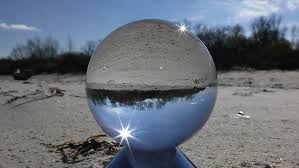
*By Archives New Zealand from New Zealand – New Zealand troops in Samoa, c.1914-15, CC BY-SA 2.0, https://commons.wikimedia.org/w/index.php?curid=51248178
